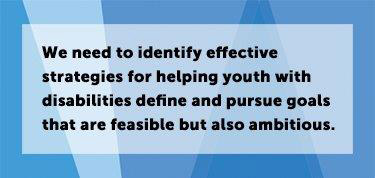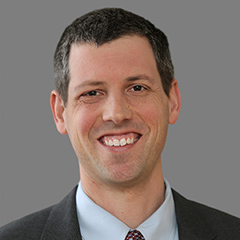Too many special education students are at risk of leaving high school unprepared for the future. That’s my conclusion after making a deep dive into their backgrounds and experiences for a national study.
Consider these facts:
- Special education students are half as likely as their peers to take college entrance tests such as the SAT.
- They are less likely to have paid work experience, despite evidence that working during high school relates to whether they can find jobs afterward.
- Their parents are more likely to see challenges on issues such as readiness for college and living independently after high school.
That’s some of what our research team found in conducting the National Longitudinal Transition Study 2012 for the U.S. Department of Education’s Institute of Education Sciences. The study provides the most comprehensive recent picture of youth in special education, who represent 12 percent of all secondary school students in the country. We surveyed 13,000 parents and 11,000 youth in grades 7 to 12 in U.S. public schools to explore their socioeconomic backgrounds, functional abilities, engagement in school and social activities, academic supports, and preparation for life after high school.
A Mixed Picture
What we saw suggests that special education students on average might not get the supports they need to succeed in the future. Half report that their classes are hard, they have trouble with homework, and they want more help from their teachers. By contrast, their peers are 15 percentage points less likely to report each of these concerns.
Despite these issues, youth in special education are less likely than other students to report getting school-based academic help outside regular hours.
Other data reinforce the view that schools can do better at educating these students: Only 63 percent of students with disabilities graduated after four years with a regular high school diploma in the 2013-2014 school year, according to the Institute of Education Sciences’ Common Core of Data—nearly 20 points below the national average for all students.
The Individuals with Disabilities Education Act (IDEA) requires that students with disabilities have access to a free, appropriate public education with services to prepare them for further education, employment, and independent living, but these numbers call into question how well this happens.
That’s why advocates are hailing a recent unanimous U.S. Supreme Court ruling as a watershed moment in their fight for access to educational programs that support challenging objectives. The case, Endrew F. v. Douglas County School District, centered on the progress standard school districts must apply when they develop individualized education programs (IEPs) for students served under IDEA. The ruling held that every student should have the chance to meet appropriately ambitious objectives. It overturned lower court decisions that “merely more than de minimis” educational benefit is enough. I am hopeful that this ruling will strengthen educational goals and supports for special education students to help them achieve better outcomes, rather than become ensnared in low expectations.
Recently I presented findings from our study at the Council of Exceptional Children conference. My discussant, Johnny Collett of the Council of Chief State School Officers, made the astute point that we must talk about high expectations and appropriate supports together if we are to help all students succeed. He also observed that if all truly means all, then it must mean each.
Getting to this point will require strong partnerships between schools, parents, and students. Here’s some good news from the National Longitudinal Transition Study 2012: Special education students like school, and their parents are more engaged than other parents in important ways, such as attending parent-teacher conferences and helping them with homework. Their parents also attend IEP meetings at very high rates. And after IEPs take on a transition-planning focus when students turn 16, about two-thirds of parents and youth report meeting with schools to set goals for what youth hope to do after high school and plan for how to achieve these goals.
Looking Ahead
 Transition planning can be a lever for improving students’ outcomes by strengthening their sense of self-determination, or feeling of control over what they can do and achieve. The transition planning process is designed to reflect students’ preferences, interests, and strengths, and involve them to the extent possible in plotting their own trajectories. Evidence suggests that self-determination may be important for post-high school outcomes. Special education students in our study had a weaker sense of self-determination than other students in some ways, and this was particularly true for youth with autism.
Transition planning can be a lever for improving students’ outcomes by strengthening their sense of self-determination, or feeling of control over what they can do and achieve. The transition planning process is designed to reflect students’ preferences, interests, and strengths, and involve them to the extent possible in plotting their own trajectories. Evidence suggests that self-determination may be important for post-high school outcomes. Special education students in our study had a weaker sense of self-determination than other students in some ways, and this was particularly true for youth with autism.
Ultimately, we need to identify effective strategies for helping youth with disabilities define and pursue goals that are feasible but also ambitious. We must know what pathways lead to success in postsecondary education, employment, and independent living for today’s students.
For More Information
Preparing for Life After High School: The Characteristics and Experiences of Youth in Special Education. Findings from the National Longitudinal Transition Study 2012.
Volume 1: Comparisons with Other Youth
Volume 2: Comparisons across Disability Groups
DISCLAIMER: All opinions expressed in this post belong to the author, and do not necessarily reflect the views of Mathematica or the Institute of Education Sciences.



